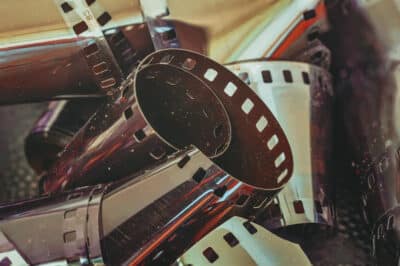Summary
Didlake Imaging has come full circle in its expertise around microfiche and microfilm. Thirty years ago, it was a resource for rendering paper documents into this storage media. Now, it is using its advanced knowledge of digital storage to transfer documents to digital formats.

For over a Century, microfilm and microfiche were used as some of the most space-efficient ways to store copies of print materials. The small format could condense thousands of pages into a small space, and newspapers, libraries and archives kept machinery capable of enlarging and rendering important documents accessible as needed. Like most technology, new developments offer an alternative that replaces these methods. The question remains how to preserve the information already stored so it remains a viable resource?
What are Microfiche and Microfilm?
Microfilm was invented in the 19th Century. Generally, 16mm or 35 mm film is used to photograph documents to preserve them in a smaller format. Microfilm, which was preferred by newspapers for keeping past issues, is generally stored in reels (like a roll of tape), and readers add light and enlarge the film for viewing. Microfiche was invented in the early 20th Century, consisting of cards of transparent film with miniaturized images. The cards are similarly placed in a reader, enlarged and lightened to view the stored images.
How Effective are Microfiche and Microfilm for Storage?
Depending on the quality of the film and the care used in its handling, both microfiche and microfilm can last for a long time, but eventually, they deteriorate. The material becomes brittle or sticky, so it can break or fuse, losing the saved material permanently. In addition, neither of these media can be utilized effectively without a reader, and the machinery can break down. The explosion of digital reproduction techniques in the 1990s largely replaced microfiche and film for new document preservation, leaving decades of information stored in the older technology. Aging film and obsolete machinery put these items at risk of loss.
Digitizing to Preserve, Access and Utilize Documents on Film
As machinery and film degrade or become obsolete, digitizing is the best means of saving the priceless content on microfilm and microfiche. This process involves using state-of-the-art technology to scan and transform the documents into a digital format that will not become obsolete. If properly scanned, using optical character recognition (OCR), a researcher can organize and leverage the documents in ways that wouldn’t have been possible with the microfilm and fiche format without significant resource outlay. Furthermore, multiple people can access digital media instantly, online, from any location. Hence, a reader no longer needs to go to a physical site and wait their turn to review a particular microfiche card or reel of microfilm.
Didlake Imaging has come full circle in its expertise around microfiche and microfilm. Thirty years ago, it was a resource for rendering paper documents into this storage media. Now, it is using its advanced knowledge of digital storage to carefully and adequately transfer documents to digital formats. As one of the few micrographic imaging companies on the East Coast, Didlake can help with just about any microfiche scanning and conversion project or source your microfilm conversion to a trusted partner. Contact our team to discuss your scanning and conversion needs.

